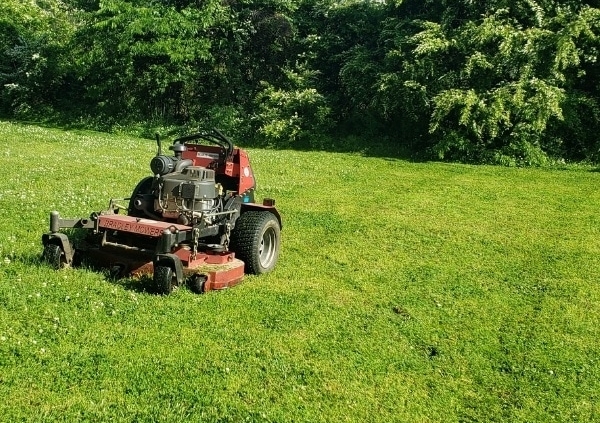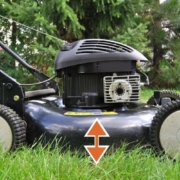The Importance of Regular Lawn Mowing
[et_pb_section fb_built=”1″ _builder_version=”4.4.8″ custom_padding=”15px||15px||false|false”][et_pb_row _builder_version=”4.6.6″ width_tablet=”” width_phone=”100%” width_last_edited=”on|phone” custom_padding=”0px||0px|||”][et_pb_column type=”4_4″ _builder_version=”4.4.8″][et_pb_text _builder_version=”4.9.3″ link_font=”|700|||||||” link_text_color=”#e95832″ header_line_height=”1.2em” header_2_font_size=”30px” header_2_line_height=”1.2em” header_3_font_size=”25px” header_3_line_height=”1.2em” custom_padding=”||||false|false” hover_enabled=”0″ header_2_font_size_tablet=”26px” header_2_font_size_phone=”24px” header_2_font_size_last_edited=”on|phone” header_3_font_size_tablet=”22px” header_3_font_size_phone=”20px” header_3_font_size_last_edited=”on|phone” sticky_enabled=”0″]
The Importance of Regular Lawn Mowing
For your home, a lush, well-trimmed lawn is the equivalent of a layer of delicious, warm, gooey chocolate sitting atop your ice cream sundae. Of course, you could eat the ice cream without the topping, but it simply would not taste as heavenly. In the same way, your home would still be a home without an immaculate lawn, but it would not be the magnet for the eyes of visitors and passersby. And as Bigham & Associates point out, you would miss out on the extra boost it could give to the value of the property. Regular lawn mowing promotes lawn health and curb appeal in many ways. Read on to learn more!
But getting your lawn to become the source of green-eyed envy from your neighbors takes some work. Most homeowners assume that the most crucial thing they have to do guarantee lawn health is watering it and giving it a good dose of fertilizers. It never crosses their minds that how they cut the lawn could be more crucial to its health. That is because it is counterintuitive to think that if you want your lawn to grow well, you have to cut it properly.
But that’s the reality. Cutting your grass the right way will help it grow better because mowing affects everything that influences lawn growth. The way you mow the lawn will have an impact on how well the grass makes use of available nutrients. It will also affect soul fertility and plant health. To understand how to get grass that is thriving, you must understand the benefits of mowing the lawn regularly.
[/et_pb_text][et_pb_text _builder_version=”4.6.6″ header_2_font_size=”30px” header_2_line_height=”1.2em” header_3_font_size=”25px” header_3_line_height=”1.2em” width=”99.9%” custom_margin=”||15px||false|false” custom_padding=”||||false|false” header_2_font_size_tablet=”26px” header_2_font_size_phone=”24px” header_2_font_size_last_edited=”on|phone” header_3_font_size_tablet=”22px” header_3_font_size_phone=”20px” header_3_font_size_last_edited=”on|phone”]
Topics covered in this blog:
[/et_pb_text][et_pb_text _builder_version=”4.6.6″ link_font=”|700|||||||” link_text_color=”#e95832″ header_2_font_size=”30px” header_2_line_height=”1.2em” header_3_font_size=”25px” header_3_line_height=”1.2em” custom_margin=”|||16px||” custom_padding=”||||false|false” header_2_font_size_tablet=”26px” header_2_font_size_phone=”24px” header_2_font_size_last_edited=”on|phone” header_3_font_size_tablet=”22px” header_3_font_size_phone=”20px” header_3_font_size_last_edited=”on|phone”]
- Curb Appeal
- Stronger Grass
- Even Growth
- Mulching
- More Resilient Lawn
- Eliminates Pests and Weeds
- How Often Should You Cut Your Grass?
[/et_pb_text][/et_pb_column][/et_pb_row][/et_pb_section][et_pb_section fb_built=”1″ _builder_version=”4.4.8″ custom_padding=”0px||0px|||”][et_pb_row admin_label=”sect-1″ module_id=”sect-1″ _builder_version=”4.4.8″ width_tablet=”” width_phone=”100%” width_last_edited=”on|phone” custom_padding=”0px|||||”][et_pb_column type=”4_4″ _builder_version=”4.4.8″][et_pb_image src=”https://riverviewturfworks.com/wp-content/uploads/Increased-Curb-Appeal.jpg” alt=”A home in Van Buren that has been serviced by Riverview Turfworks. The grass has been mowed, and the landscape beds around the front door have fresh mulch and pruned shrubs.” title_text=”Increased Curb Appeal” align=”center” _builder_version=”4.6.0″][/et_pb_image][et_pb_text _builder_version=”4.6.6″ header_2_font_size=”30px” header_2_line_height=”1.2em” header_3_font_size=”25px” header_3_line_height=”1.2em” custom_padding=”||||false|false” header_2_font_size_tablet=”26px” header_2_font_size_phone=”24px” header_2_font_size_last_edited=”on|phone” header_3_font_size_tablet=”22px” header_3_font_size_phone=”20px” header_3_font_size_last_edited=”on|phone”]
Curb Appeal
Curb appeal is the first and most obvious benefit of a well-mown lawn. A properly manicured lawn confers dignity and respect on the occupants of the property. It suggests that the people who live in it are high-value people with good taste.
Also, if the home is for sale, the lawn helps to make the right impression on prospective buyers and put them in the right mood for viewing the rest of the house. Regularly mown lawns increase a home’s value and enhance the value of properties in a neighborhood.[/et_pb_text][/et_pb_column][/et_pb_row][et_pb_row admin_label=”sect-2″ module_id=”sect-2″ _builder_version=”4.6.6″ width_tablet=”” width_phone=”100%” width_last_edited=”on|phone” custom_padding=”0px|||||”][et_pb_column type=”4_4″ _builder_version=”4.4.8″][et_pb_image src=”https://riverviewturfworks.com/wp-content/uploads/Lawn-Care-for-Stronger-Grass.jpg” alt=”The backyard of a client of Riverview Turfworks. The grass is noticeably thick and strong thanks to regular mowing.” title_text=”Lawn Care for Stronger Grass” align=”center” _builder_version=”4.6.0″][/et_pb_image][et_pb_text _builder_version=”4.6.6″ header_2_font_size=”30px” header_2_line_height=”1.2em” header_3_font_size=”25px” header_3_line_height=”1.2em” custom_padding=”||||false|false” header_2_font_size_tablet=”26px” header_2_font_size_phone=”24px” header_2_font_size_last_edited=”on|phone” header_3_font_size_tablet=”22px” header_3_font_size_phone=”20px” header_3_font_size_last_edited=”on|phone”]
Stronger Grass
Contrary to what homeowners may think, cutting the lawn does not make the grass weaker. It makes them stronger.
That is because mowing is an indirect process that removes the weakest grasses in the lawn. Cutting grasses stresses them. But the hardest and most resilient shoots heal faster and grow to take up any available spaces in the lawn. The weaker shoots, which recover more slowly, are denied resources and become even weaker. Eventually, the weak grasses die out to make room for the stronger growths.[/et_pb_text][/et_pb_column][/et_pb_row][et_pb_row admin_label=”sect-3″ module_id=”sect-3″ _builder_version=”4.4.8″ width_tablet=”” width_phone=”100%” width_last_edited=”on|phone” custom_padding=”0px|||||”][et_pb_column type=”4_4″ _builder_version=”4.4.8″][et_pb_image src=”https://riverviewturfworks.com/wp-content/uploads/Lawn-Tips-for-Even-Growth.jpg” alt=”A Riverview Turfworks employee in the process of mowing thick and green grass.” title_text=”Lawn Tips for Even Growth” align=”center” _builder_version=”4.6.0″ _module_preset=”default”][/et_pb_image][et_pb_text _builder_version=”4.9.3″ header_2_font_size=”30px” header_2_line_height=”1.2em” header_3_font_size=”25px” header_3_line_height=”1.2em” custom_padding=”||||false|false” hover_enabled=”0″ header_2_font_size_tablet=”26px” header_2_font_size_phone=”24px” header_2_font_size_last_edited=”on|phone” header_3_font_size_tablet=”22px” header_3_font_size_phone=”20px” header_3_font_size_last_edited=”on|phone” link_text_color=”#E95832″ link_font=”|600|||||||” sticky_enabled=”0″]
Even Growth
Regular mowing of the lawn creates uniform access to resources for all the grasses in the lawn. When the lawn is cut a few inches above the ground, it allows water, sunlight, and oxygen to penetrate plant roots and the soil at an even rate. The grasses have resources at a consistent rate.
And the chances of areas of patchy or uneven growth occurring in the lawn are much lower. Uniformity in the appearance of the grass across every area of the lawn is essential, and regular mowing facilitates this.
[/et_pb_text][/et_pb_column][/et_pb_row][et_pb_row admin_label=”sect-4″ module_id=”sect-4″ _builder_version=”4.4.8″ width_tablet=”” width_phone=”100%” width_last_edited=”on|phone” custom_padding=”0px|||||”][et_pb_column type=”4_4″ _builder_version=”4.4.8″][et_pb_text _builder_version=”4.9.3″ header_2_font_size=”30px” header_2_line_height=”1.2em” header_3_font_size=”25px” header_3_line_height=”1.2em” custom_padding=”||||false|false” hover_enabled=”0″ header_2_font_size_tablet=”26px” header_2_font_size_phone=”24px” header_2_font_size_last_edited=”on|phone” header_3_font_size_tablet=”22px” header_3_font_size_phone=”20px” header_3_font_size_last_edited=”on|phone” sticky_enabled=”0″ link_text_color=”#E95832″ link_font=”|600|||||||”]
Mulching
Leaving grass cuttings on the lawn after mowing them helps to recycle nutrients back into the soil and reduce the need for chemical fertilizers. But the mulching obtained from an irregularly cut lawn has a lower quality than mulching from a regularly cut lawn. That’s because longer blades of grass are weaker and have fewer nutrients than younger growths. Moreover, it is easier to leave grass cuttings on the lawn when they are short.
[/et_pb_text][/et_pb_column][/et_pb_row][et_pb_row admin_label=”sect-5″ module_id=”sect-5″ _builder_version=”4.4.8″ width_tablet=”” width_phone=”100%” width_last_edited=”on|phone” custom_padding=”0px|||||”][et_pb_column type=”4_4″ _builder_version=”4.4.8″][et_pb_image src=”https://riverviewturfworks.com/wp-content/uploads/How-To-Grow-a-More-Resilient-Lawn.jpg” alt=”The backyard of a client of Riverview Turfworks in Van Buren AR. The grass is green and healthy and has been prefessionally cut.” title_text=”How To Grow a More Resilient Lawn” align=”center” _builder_version=”4.6.0″][/et_pb_image][et_pb_text _builder_version=”4.6.6″ header_2_font_size=”30px” header_2_line_height=”1.2em” header_3_font_size=”25px” header_3_line_height=”1.2em” custom_padding=”||||false|false” header_2_font_size_tablet=”26px” header_2_font_size_phone=”24px” header_2_font_size_last_edited=”on|phone” header_3_font_size_tablet=”22px” header_3_font_size_phone=”20px” header_3_font_size_last_edited=”on|phone”]
More Resilient Lawn
Regular grass cutting creates a lawn that is resilient and better equipped to handle stress. Lawns have exposure to several damaging events likes pests, disease, and bad weather. However, if the lawn has been reinforced and improved through regular mowing, it will be able to weather any negative event. An irregularly cut lawn will lack the shock absorbers and immunity to deal with harmful events.[/et_pb_text][/et_pb_column][/et_pb_row][et_pb_row admin_label=”sect-6″ module_id=”sect-5″ _builder_version=”4.6.0″ width_tablet=”” width_phone=”100%” width_last_edited=”on|phone” custom_padding=”0px|||||”][et_pb_column type=”4_4″ _builder_version=”4.4.8″][et_pb_image src=”https://riverviewturfworks.com/wp-content/uploads/Weekly-Professional-Lawn-Mowing.jpg” alt=”A lawn mower being unloaded from a Riverview Turfworks work truck.” title_text=”Weekly Professional Lawn Mowing” align=”center” _builder_version=”4.6.0″][/et_pb_image][et_pb_text _builder_version=”4.6.6″ header_2_font_size=”30px” header_2_line_height=”1.2em” header_3_font_size=”25px” header_3_line_height=”1.2em” custom_padding=”||||false|false” header_2_font_size_tablet=”26px” header_2_font_size_phone=”24px” header_2_font_size_last_edited=”on|phone” header_3_font_size_tablet=”22px” header_3_font_size_phone=”20px” header_3_font_size_last_edited=”on|phone”]
Eliminates Pests and Weeds
Pests and diseases need a favorable environment to grow. Tall grasses provide the right environment for disease and disease-causing agents. It also offers a perfect hiding place for pests.
Mowing the lawn frequently creates space for air and sunlight to penetrate grass shoots. A well-aerated lawn will not permit pests or diseases because the majority of lawn pests and disease can only survive in dank environments.[/et_pb_text][/et_pb_column][/et_pb_row][et_pb_row admin_label=”sect-7″ module_id=”sect-5″ _builder_version=”4.6.0″ width_tablet=”” width_phone=”100%” width_last_edited=”on|phone” custom_padding=”0px|||||”][et_pb_column type=”4_4″ _builder_version=”4.4.8″][et_pb_text _builder_version=”4.6.6″ header_2_font_size=”30px” header_2_line_height=”1.2em” header_3_font_size=”25px” header_3_line_height=”1.2em” custom_padding=”||||false|false” header_2_font_size_tablet=”26px” header_2_font_size_phone=”24px” header_2_font_size_last_edited=”on|phone” header_3_font_size_tablet=”22px” header_3_font_size_phone=”20px” header_3_font_size_last_edited=”on|phone”]
How Often Should You Cut Your Grass?
Now that you know why you should mow your lawn regularly, how should you define regular?
To determine how often to cut your grass, follow the below rules:
- Never remove more than one-third of the grass blades’ height in a single mow
- Always cut the grass lower than 3 inches above the ground
Based on these two rules, make seasonal changes on the regularity of the lawn mowing without adversely affecting the health of the lawn.
*The research and content contained in this blog post are attributed to Neal Boyd at Bigham & Associates, LLC.
[/et_pb_text][/et_pb_column][/et_pb_row][/et_pb_section]









Leave a Reply
Want to join the discussion?Feel free to contribute!